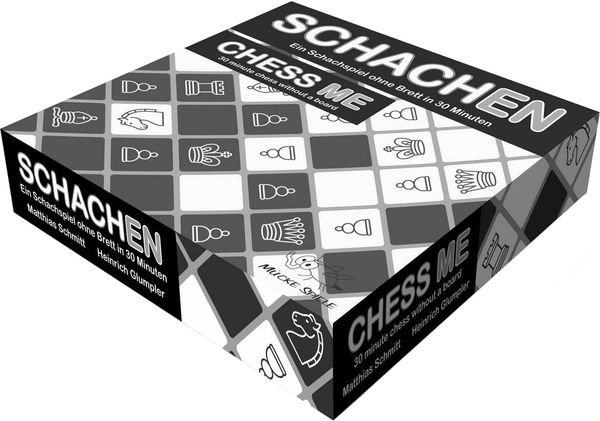The Sicilian Defense is an opening that commences with the moves 1.e4 c5. The Sicilian Defense is the most popular and best-scoring response to White’s first move 1.e4. For example, 1.d4, is a statistically more successful opening for White because of the high success rate of the Sicilian Defense against 1.e4. New In Chess stated in its 2000 Yearbook that of the games in its database, White scored 56.1% in 296,200 games beginning 1.d4, but 54.1% in 349,855 games beginning 1.e4, mainly because the Sicilian Defense held White to a 52.3% score in 145,996 games. 17% of all games between GMs and 25% of the games in the Chess Informant Database, begin with the Sicilian Defense Almost one quarter of all games use the Sicilian Defense. Grandmaster John Nunn attributes the Sicilian Defenses’ popularity to its combative nature since in many lines Black is playing not just for equality, but for the advantage. The drawback is that White often obtains an early initiative thus Black has to take care not to fall victim to a quick attack. Grandmaster Jonathan Rowson considered why the Sicilian Defense is the most successful response to 1.e4, even though 1...c5, develops no pieces and the pawn on c5 controls only d4 and b4.
J.Rowson writes: ‘To my mind there is quite a straightforward explanation. In order to profit from the initiative granted by the first move, White has to make use of his opportunity to do something before Black has an equal number of opportunities of his own.’ However, to do this he has to make ‘contact’ with the black position. The first point of contact usually comes in the form of a pawn exchange which leads to the opening of the position. The thought behind 1...c5 is this: ‘OK, I’ll let you open the position, and develop your pieces aggressively, but at a price - you have to give me one of your center pawns.’ (Jonathan Rowson, Chess for Zebras: Thinking Differently About Black and White). By advancing the c-pawn two squares Black asserts control over the d4-square and begins the fight for the center of the board. The move resembles 1…e5, the next most common response to 1.e4, in that respect. Unlike 1...e5, 1...c5 breaks the symmetry of the position which strongly influences both players’ future actions.
History of the Opening The earliest recorded notes on the Sicilian Defense date back to the late 16th century by the Italian chess players Giulio Polerio and Gioachino Greco. As it was already mentioned above, the Sicilian Defense was analyzed by Giulio Polerio in his 1594 manuscript on chess, though he did not use the term Sicilian Defense. It was later the subject of analysis by leading players of the day Alessandro Salvio (1604), Don Pietro Carrera (c. 1617), and Gioachino Greco (1623), and later Conte Carlo Francesco Cozio (c. 1740). The great French player and theoretician André Danican Philidor opined of the Sicilian Defense in 1777, ‘This way of opening the game... is absolutely defensive, and very far from being the best... but it is a very good one to try the strength of an adversary with whose skill you are unacquainted.’ In 1813, the English master Jacob Henry Sarratt effectively standardized his English translation of the name of this opening as the Sicilian Defense, referring to an old Italian manuscript that used the phrase, ‘il gioco siciliano’ (The Sicilian Game). The Sicilian Defense was fairly popular for much of the nineteenth century as Louis-Charles Mahé de La Bourdonnais, Adolf Anderssen, Howard Staunton, Louis Paulsen, and Carl Jaenisch all played it with some consistency.
In the ninth edition of Modern Chess Openings, Walter Korn noted that the Sicilian ‘received three of its earliest practical tests, and a big boost in popularity, in the 1834 MacDonnell [sic]-La Bourdonnais match, 1843 Staunton-St. Amant match, and the 1851 London Tournament’. Staunton wrote of the Sicilian Defense, ‘In the opinion of Jaenisch Foreword : History of the Opening 13 and the German Handbuch, with which I coincide, this is the best possible reply to 1.P-K4, (1.e4 in algebraic notation) ‘as it renders the formation of a center impracticable for White and prevents every attack.’ The opening fell out of favour in the later part of the 19th century when some of the world’s leading players rejected it. Paul Morphy, the world’s best player in the late 1850s, decried ‘that pernicious fondness for the Sicilian Defense... extending from about 1843 to some time after 1851.’ Wilhelm Steinitz, the first FIDE World Champion, also disliked the Sicilian Defense and rejected it in favour of 1...e5. The death of the opening’s two greatest proponents, Staunton in 1874 and Anderssen in 1879 also contributed to its decline. It has been said that ‘these losses almost dealt a knockout blow to the Sicilian because it took a long time to find such important figures to carry the Sicilian’s standard.’
George H. D. Gossip, in The Chess Player’s Manual, first published in 1874, wrote: ‘Of late years... discoveries have been made which have the effect of considerably strengthening White’s attack, and the Sicilian Defense is now considered by most modern authorities to be a comparatively weak mode of play.’ Freeborough and Ranken, in their treatise Chess Openings: Ancient and Modern (1889, 1896), wrote that the Sicilian Defense ‘had at one time the reputation of being the best reply to 1.P-K4, but this has not been confirmed by popular practice. Several eminent players have, however, held to the opinion that it is quite trustworthy.’ The Sicilian Defense continued to be shunned by most leading players at the start of the 20th century, as 1...e5 held center stage. J.R.Capablanca, FIDE World Champion from 1921 to 1927, famously denounced it as an opening where ‘Black’s game is full of holes.’ Similarly, James Mason wrote: ‘Fairly tried and found wanting, the Sicilian has now scarcely any standing as a first-class defense... [It] is too defensive. There are too many holes created in the Pawn line. Command of the field, especially in the center, is too readily given over to the invading force.’ Siegbert Tarrasch wrote that 1...c5 ‘is certainly not strictly correct, for it does nothing toward development and merely attempts to render difficult the building up of a center by the first player... The Sicilian Defense is excellent for a strong player who is prepared to take risks to force a win against an inferior opponent. Against best play, however, it is bound to fail.’
The Sicilian Defense was not seen even once in the 75 games played at the great St. Petersburg 1914 tournament. However, some leading players such as Emanuel Lasker (FIDE World Champion from 1894 to 1921), Frank 14 The Modernized GRIVAS SICILIAN Marshall, Savielly Tartakower, Aaron Nimzowitsch, and later Max Euwe (FIDE World Champion from 1935 to 1937) played the Sicilian Defense. Even J.R.Capablanca and S. Tarrasch, despite their critical comments, occasionally played the opening. It was played six times (out of 110 games) at New York 1924. The following year, the authors of Modern Chess Openings (4th edition) wrote: ‘The Sicilian has claims to be considered as the best of the irregular defenses to 1.P-K4 at Black’s disposal, and has been practiced with satisfactory results by the leading players of the day.’ In this period Black’s approach was usually slow and positional, and the all-out attacks by White that became common after World War II had not yet been developed. The fortunes of the Sicilian Defense were further revived in the 1940s and 1950s by players such as Isaac Boleslavsky, Alexander Kotov, and Miguel Najdorf. Reuben Fine, one of the world’s leading players during this time period, wrote of the Sicilian in 1948, ‘Black gives up control of the center, neglects his development, and often submits to horribly cramped positions.
How can it be good? Yet, the brilliant wins by White are matched by equally brilliant wins by Black; time and again the Black structure has been able to take everything and come back for more.’ Later, Bent Larsen, Ljubomir Ljubojević, Lev Polugaevsky, Leonid Stein, Mark Taimanov and Mikhail Tal all made extensive contributions to the theory and practice of the defense. Through the efforts of World Champions Bobby Fischer and Garry Kasparov, the Sicilian Defense became recognised as the defense that offered Black the most winning chances against 1.e4. Both these great players favoured sharp, aggressive play and employed the Sicilian Defense almost exclusively throughout their careers, burnishing the defense’s present reputation. Today, most leading GMs include the Sicilian Defense in their opening repertoire. In 1990, the authors of Modern Chess Openings (13th edition) noted that ‘in the twentieth century the Sicilian has become the most played and most analyzed opening at both the club and master levels.’ In 1965, in the 10th edition of that book, Grandmaster Larry Evans observed that: ‘The Sicilian is Black’s most dynamic, asymmetrical reply to 1.P-K4. It produces the psychological and tension factors which denote the best in modern play and gives notice of a fierce fight on the very first move.
Efstratios Grivas, Summer 2021.
 Excerpt
Excerpt


